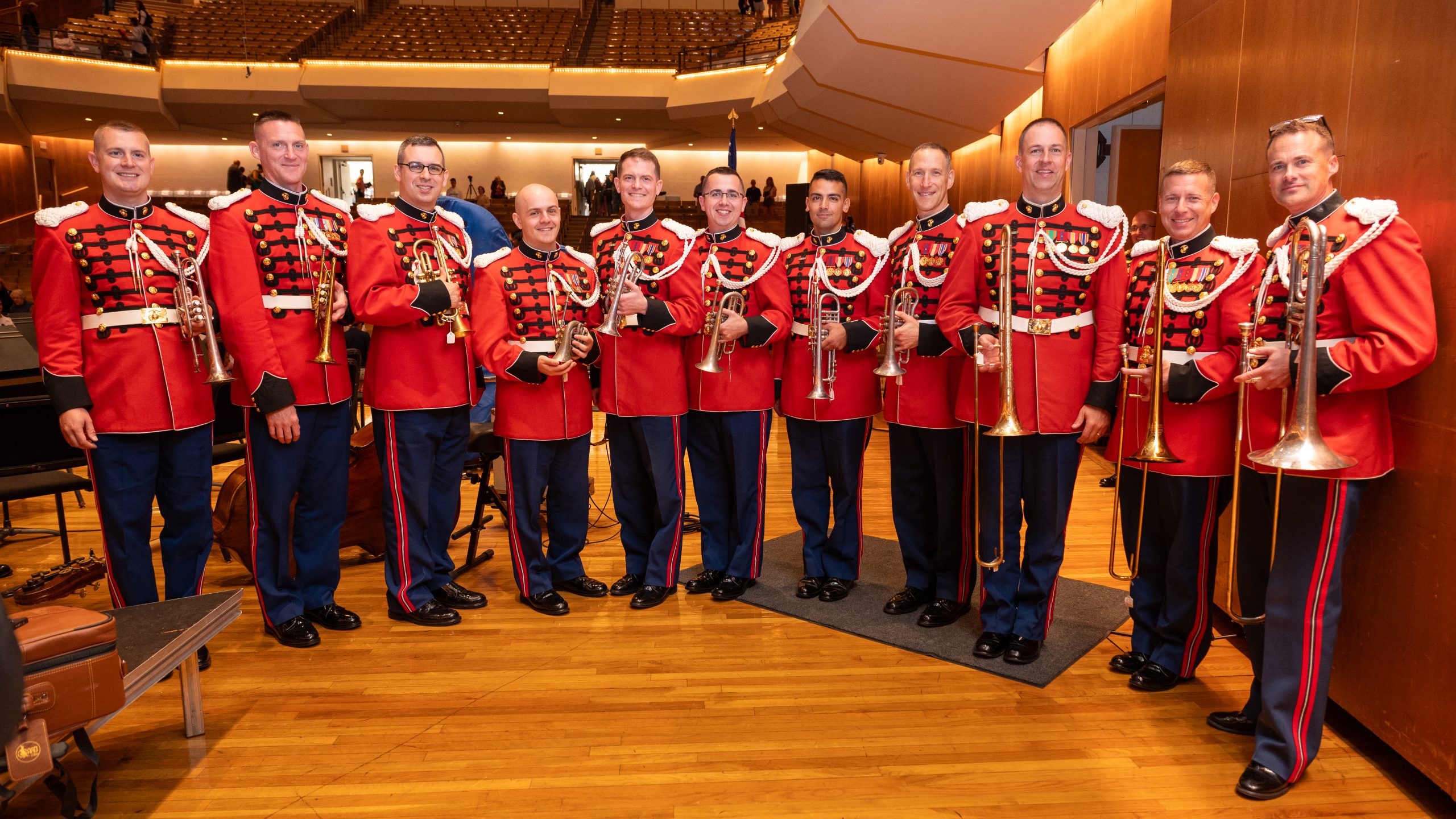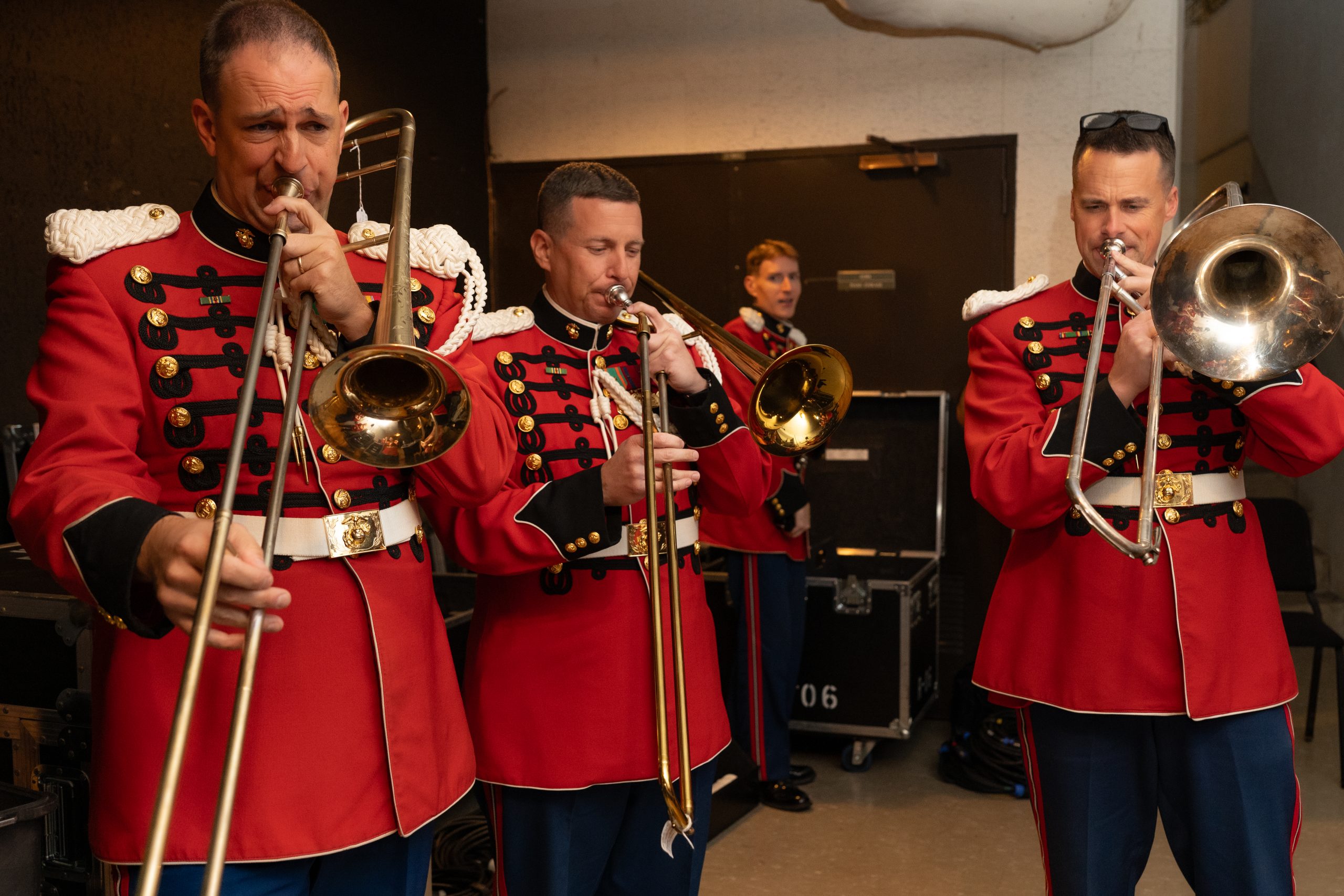

We had a wonderful visit and concert with the US Marine Band on Sunday, and a several members of the ensemble asked to play some of our historical cornets and trombones including Herbert L. Clarke’s 1886 Distin pocket cornet and his 1907 C.G. Conn cornet played during the Sousa Band’s World Tour of 1910-1911. Special thanks to Karl Johnson, playing our Shuman trombone (bottom Center) that was donated to the Center by Doug Yeo, for the wonderful photographs. If you ever have a chance to catch one of the Marine Band’s performances, you won’t be disappointed. Such a wonderfully talented group of musicians.